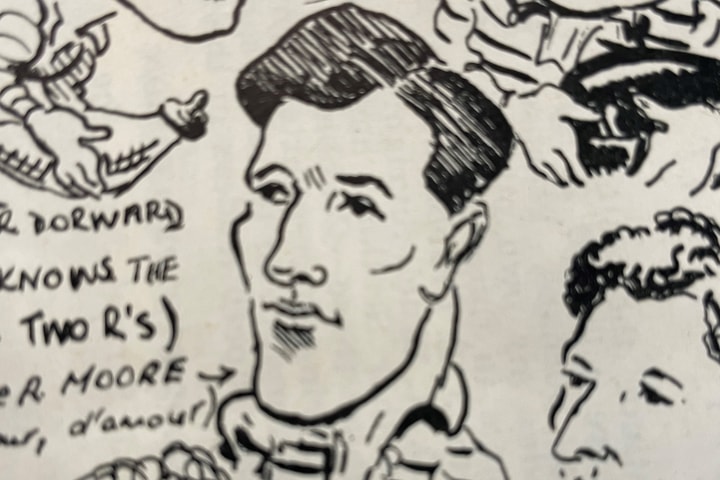
21 November 2025

The following is an extract from 'Doing their Duty' by Phil McGowan and refers to the preparations before and during the 1918 German Spring Offensive...
Lieutenant Colonel Livesay (2 caps 1898-1899) had been redeployed over the winter to the American staff school to assist with the incoming recruits. By spring however he was with the 61st Division who lined up alongside Captain Harold Hodges (2 caps 1906) and the 30th Division in a position north of Ham, to the south of St Quentin. On the night of the 20th March some of Livesay's men launched a daring night-time raid on the German trenches opposite, taking a number of prisoners, some of whom revealed that an attack was imminent. The advance warning of the German 'Kaiserschlacht', gave the depleted Fifth Army a crucial window of opportunity in which an intermittent bombardment was launched on the enemy positions. It wasn't enough to prevent the coming storm however. To the north at Nurlu Lieutenant Colonel Ritson (9 caps 1908-1913) observed the colossal artillery assault that enveloped Livesay and Hodges' positions at 4.40am the following morning. Winston Churchill, who was with Ritson's 9th Scottish Division described the scenes thus:
'…it swept round us in a wide curve of red leaping flame stretching to the north far along the front of the Third Army, as well as of the Fifth Army on the south, and quite unending in either direction...the enormous explosions of the shells upon our trenches seemed almost to touch each other, with hardly an interval in space or time...The weight and intensity of the bombardment surpassed anything which anyone had ever known before'.

The artillery and gas bombardment lasted for five hours before 76 German divisions advanced on just 28 British. Livesay and Hodges' divisions lay directly in their path. In under an hour the advancing Germans had overrun every position in the Fifth Army's forward line and Flanders was in danger of encirclement. With command in disarray Captain Hodges was sent to locate the exact position of the right hand battalion. Unaware of the precise extent of the German advance he entered a building that had already been captured. Conflicting reports exist about what happened next but one suggests that Hodges attempted to fight his way back out of the building with a handgun. Harold Hodges, who had been blown up at Ypres in 1915 and come through the first day of the Somme, had not survived the initial advances of the Spring Offensive of 1918. At home his mother went through the agony of receiving letters from the front expressing the belief of his colonel that her son was likely taken prisoner. But it was not to be and his body was eventually found several months later. In one of many letters a chaplain remarked that Hodges' 'fine strong Christian character' was admired and respected by men and officers alike.

Harold Hodges the player
Harold Augustus Hodges, born in Mansfield Wodehouse in Nottinghamshire, was one of six brothers. He attended Roclaveston House School and then Sedbergh School where he became captain of the school's rugby team. On leaving Sedbergh he enrolled at Trinity College, Oxford in 1904. A tenacious prop forward he gained four consecutive blues for Oxford between 1905 and 1908. In the last of these Hodges was made captain and took the courageous and slightly infamous decision not to select Ronnie Poulton amongst his backs. During this period he turned out regularly for Nottingham and was also selected for Midland Counties. In 1906 Hodges was called upon to represent England against Wales and then Ireland. For his first cap he joined his club captain Vincent Cartwright in the English pack along with George Dobbs and with John Raphael on the wing. They improved on the previous year's result but not enough to avoid defeat. By 1909 Hodges had found employment as a master at Tonbridge School. He continued to play rugby for Nottingham and 1st class cricket for Nottinghamshire. His body rests in Roye New British Cemetery. He is remembered at Sedbergh School, Oxford University RFC, Trinity College, Oxford and St Peter's Church in East Bridgeford.

About the Author - This article is an extract from the book 'Doing Their Duty: How England's Rugby Players Helped Win the First World War'. Phil McGowan is Curator at the World Rugby Museum.
Follow the World Rugby Museum on Facebook, Twitter and Instagram.